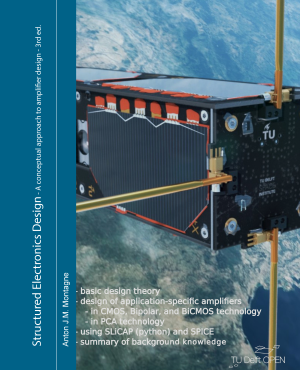Compensation for open and shorted ports#
The source impedance and/or the load impedance of an amplifier may be subjected to large changes. Those changes may be the result of varying operating conditions or due to defects. Shorted or interrupted connections at the amplifier ports are common defects that have to be considered during design. Such defects may result in a considerable change in the loop gain and cause instability. Unstable behavior and oscillations may cause permanent damage to the amplifier due to increased power losses. In practice, a shorted port will never be terminated with zero impedance and a disconnected port will never be terminated with an infinite impedance. During these fault situations unpredictable parasitic impedances will determine the port termination impedance.
According to the definition of stability, the amplifier will be stable for all possible port terminations if, for all these terminations, the poles are located in the left half of the complex plane. Frequency compensation techniques that have been discussed in this chapter can be applied to achieve this. However, performing root-locus analysis and frequency compensation for an unlimited number of port terminations is not doable. It is far better to perform these analyses and apply frequency compensation techniques only for normal operating conditions. Additional corrective measures can be taken to ensure stability under fault conditions. In this section, we will discuss such measures.
Compensation of shorted ports#
In a case of a shorted port or a port terminated with a relatively low impedance, it is useful to study the real part of the port impedance of the amplifier:
Definition
An amplifier is stable for all port termination impedances if the real part of the port impedance is positive for all frequencies.
Hence, in order to check the stability for relatively low termination impedances, we need to study the real part of the output impedance. The test benches for determination of the input and output impedances have been defined in section Input and output impedance.
If, in some frequency range, the real part of the port impedance is negative, stable short circuit behavior can be ensured by placing a correction impedance in series with the port. This series impedance should establish a positive real part of the corrected port impedance at all frequencies.
If no positive feedback has been applied at DC, the DC output resistance will usually be positive. Correction of a possible negative real part of the port impedance at higher frequencies can then be achieved by inserting a parallel \(LR\) network in series with the amplifier port. This is shown in Fig. 446. The real part of the admittance of this network is positive and has a high-pass character:
Hence, it can provide effective compensation for frequencies above \(\omega=\frac{R}{L}\).
Compensation of open ports#
In a case we leave the port of the amplifier open or terminate it with a relatively high impedance,
it is easier to consider the real part of the port admittance of the amplifier:
Definition
An amplifier is stable for all port termination admittances if the real part of the port admittance is positive for all frequencies.
If, in some frequency range, this real part is negative, we can ensure open circuit stability by placing a correction admittance in parallel with the port. This parallel admittance should establish a positive real part of the corrected port admittance at all frequencies.
If no positive feedback has been applied at DC, the DC output conductance will usually be positive. Correction of a possible negative real part of the port admittance at higher frequencies can then be achieved by placing a series \(RC\) network in parallel with the amplifier port. This is shown in Fig. 447. The real part of the admittance of this network is positive and has a high-pass character:
Hence, it can provide effective compensation for frequencies above \(\omega=\frac{1}{RC}\).
